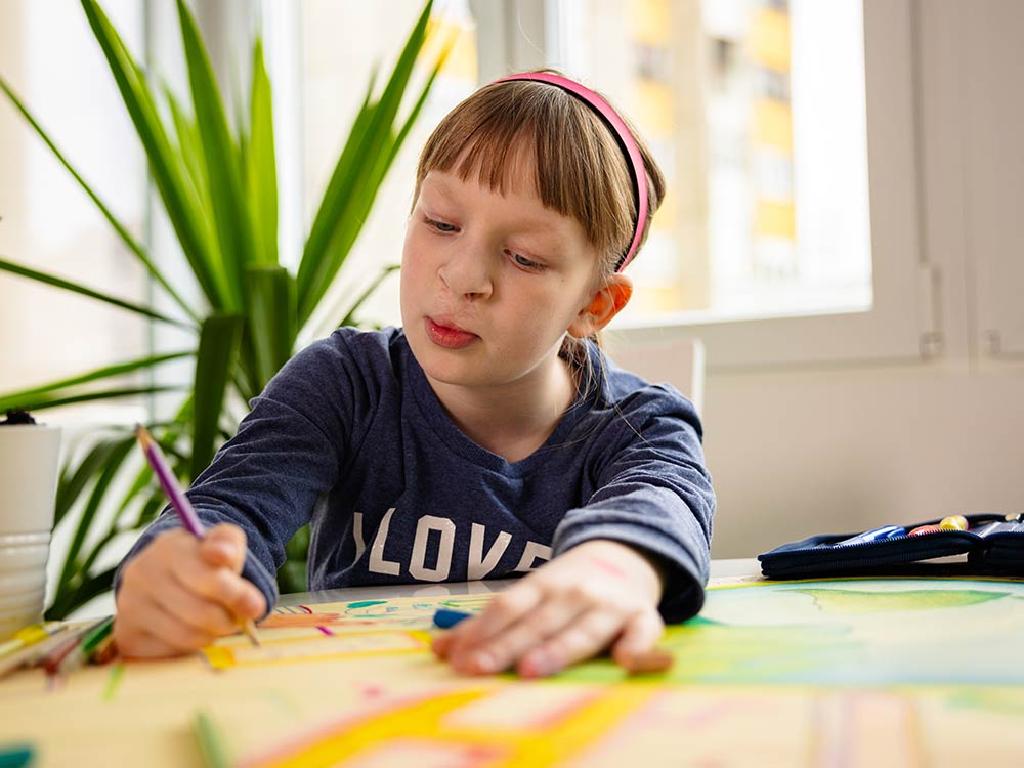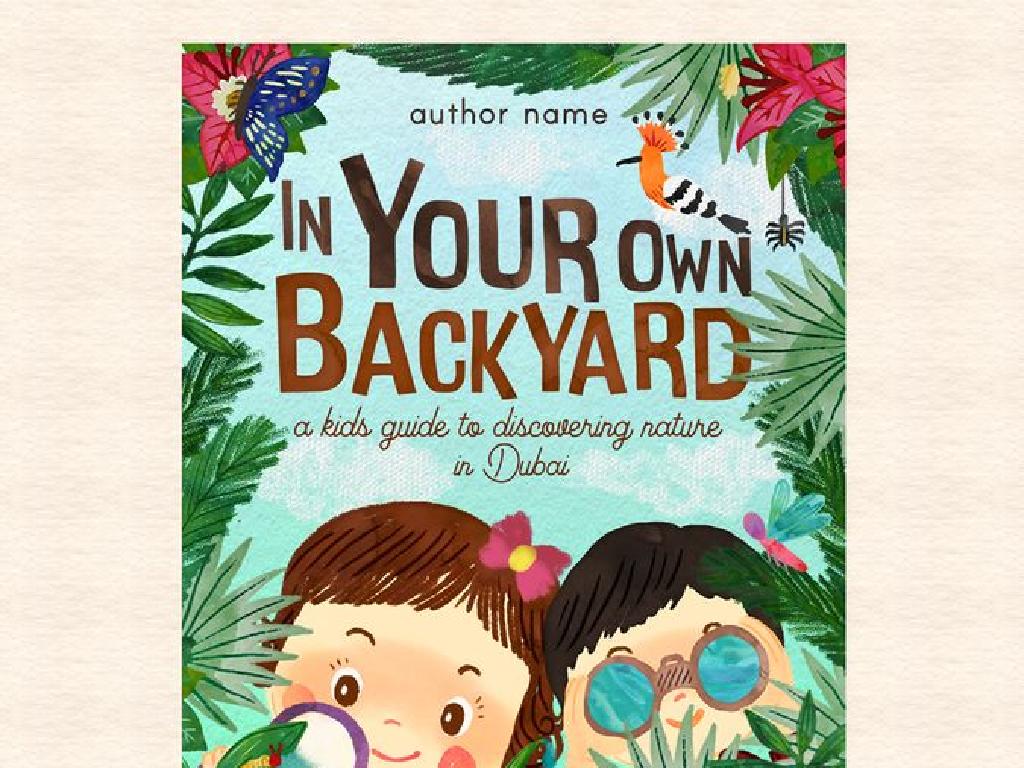Inside And Outside
Subject: Math
Grade: Pre-k
Topic: Positions
Please LOG IN to download the presentation. Access is available to registered users only.
View More Content
Exploring ‘Inside’ and ‘Outside’
– Learn about ‘Inside’ and ‘Outside’
– ‘Inside’ means within something, like being in a box
– Understand ‘Positions’ in space
– ‘Outside’ means not within something, like standing out of the box
– Play games to practice
– We’ll play games to find objects ‘inside’ and ‘outside’
– Get ready for fun activities
|
This slide introduces the concept of ‘Inside’ and ‘Outside’ as part of understanding positions in space, which is a fundamental spatial skill for Pre-K students. Start by explaining the terms with simple, relatable examples such as being inside a classroom or outside in the playground. Use physical activities and games to reinforce the concepts, such as asking children to step inside a hoop or stand outside a marked area. Encourage participation and ensure that each child understands the difference between the two positions by the end of the lesson. The activities should be interactive and enjoyable to keep the young learners engaged.
Understanding ‘Inside’ and ‘Outside’
– ‘Inside’ means being within
– Surrounded by something, like in a room
– Examples of ‘Inside’
– Toys in a box, a note in an envelope
– ‘Outside’ means not within
– Being on the other side of a boundary
– Examples of ‘Outside’
– A dog outside the house, a ball outside the box
|
This slide introduces the concept of ‘inside’ and ‘outside’ to Pre-K students. Start by explaining that ‘inside’ means being surrounded by something or being within something. Use tangible examples like toys inside a toy box or a letter inside an envelope to illustrate the concept. Then, contrast with ‘outside,’ which means not being within something or being on the other side of a boundary. Provide examples like a dog outside the house or a ball outside the box. Use props or pictures to visually demonstrate these concepts and engage the students in identifying objects that are inside or outside in the classroom.
Let’s Find ‘Inside’!
– Search for ‘inside’ in the classroom
– Look at objects in containers or enclosed spaces
– Find items inside your desk
– Pencils or books might be inside your desk
– Discuss ‘inside’ examples
– Understand ‘inside’ concept
– ‘Inside’ means surrounded by something else
|
This slide is designed to engage Pre-K students in a practical activity to understand the concept of ‘inside’. Encourage the children to look around the classroom and identify objects that are contained within something else, such as toys in a box or crayons in a cup. Prompt them to explore their own desks to find items that are ‘inside’. Use this activity to have a discussion with the class about what it means for something to be ‘inside’ and how it is different from ‘outside’. This will help them grasp the concept of positions in a tangible and interactive way. For the activity, consider having different stations with various containers and objects to further illustrate the concept.
Understanding ‘Outside’
– ‘Outside’ means not inside
– Being out of something
– See a dog outside the house
– Imagine your pet playing in the yard
– A ball outside the basket
– Think of playing with a ball in the park
|
This slide introduces the concept of ‘outside’ to Pre-K students. It’s important to use simple language and relatable examples that resonate with their daily experiences. Explain that ‘outside’ is the opposite of ‘inside’ and it means not being in something, like when they step out of their home to the yard, or when their toys are not in the toy box. Use pictures of a dog outside a house and a ball outside a basket to visually reinforce the concept. Encourage the children to think of and discuss other examples of ‘outside’ from their own lives. This will help them understand the concept in a fun and engaging way.
Let’s Find ‘Outside’!
– Understand ‘outside’ position
– ‘Outside’ means not inside something
– Find ‘outside’ items in class
– Look around to see what’s not inside anything
– Is your bottle outside the bag?
– Think about where your bottle is placed
– Share what you found!
|
This slide is aimed at helping Pre-K students understand the concept of ‘outside’ as a positional word. Start by explaining that ‘outside’ means not being inside something. Encourage the children to look around the classroom and identify objects that are not inside anything else, such as a water bottle that is not in a backpack. Ask them to think about where their own water bottle is placed: Is it inside or outside their backpack? This activity will help them relate the concept to real-life objects, reinforcing their understanding. After the activity, have the students share their findings with the class to ensure everyone has grasped the concept of ‘outside’.
Learning About Inside vs. Outside
– ‘Inside’ means surrounded by something
– Like being in a classroom or a box
– ‘Outside’ means not within something
– Like playing in the playground, not in a structure
– Examples of ‘inside’ and ‘outside’
– A toy in a box is ‘inside’, a toy on the ground is ‘outside’
– Class activity: Find ‘inside’ and ‘outside’
– Look around the room and point to things that are ‘inside’ or ‘outside’
|
This slide introduces the concepts of ‘inside’ and ‘outside’ to Pre-K students. Start by explaining that ‘inside’ means something is completely surrounded by something else, like when they are in their classroom or when toys are in a box. Conversely, ‘outside’ is when something is not within something else, like when they play in the playground. Use tangible examples that are relatable to their daily experiences. For the class activity, encourage the children to look around the room and identify objects that are ‘inside’ (e.g., a pencil inside a cup) or ‘outside’ (e.g., a backpack on a hook). This activity will help reinforce the concepts through physical identification and movement.
Inside and Outside Game
– Play a game with objects and a box
– Decide: inside or outside the box?
– Is the teddy bear going inside or sitting outside the box?
– Sort objects with classmates
– Work as a team to place items correctly
– Have fun learning positions!
|
This interactive class activity is designed to help Pre-K students understand the concept of ‘inside’ and ‘outside’ as spatial positions. Set up a box in the classroom and provide a variety of objects. Encourage the children to take turns and decide where each object belongs: inside the box or outside of it. This activity promotes teamwork and communication as they work together to sort the objects. It also provides a tactile learning experience, which is crucial for this age group. As a teacher, guide them with questions and provide positive feedback. Possible variations of the activity could include using different containers, sorting by size or color, and introducing new vocabulary related to positions.
Review and Goodbye!
– Great job on ‘Inside’ & ‘Outside’
– Share one ‘inside’ item
– Example: A cookie ‘inside’ a jar
– Share one ‘outside’ item
– Example: A dog ‘outside’ in the yard
– Excited for more Math fun!
|
This slide is a wrap-up for the lesson on ‘Inside’ and ‘Outside’, reinforcing the concepts learned. Encourage the children to think of examples from their own experiences. Ask them to visualize and share one thing they can find inside something, like a toy inside a box, and one thing that is outside, like a car in a parking lot. Praise their efforts and participation throughout the lesson. Let them know that their understanding of these concepts is important and that you’re looking forward to seeing them in the next class for more Math adventures. This will help them feel accomplished and eager to continue learning.






